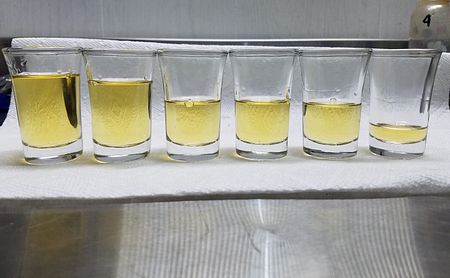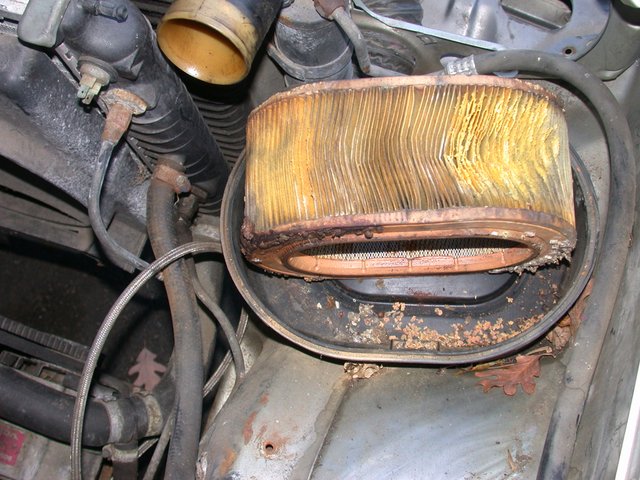I thought I would give the poor little Bertone one last chance.
_Bertone_Cleaned_Up(3).jpg?width=120&height=74&fit=bounds&crop=fill)
_(edited)_(edited)_Bertone_Cleaned_Up(6).jpg?width=1920&height=1080&fit=bounds)
After the third fuel distributor rebuild it started instantly, idled fine just below 1k rpm but still had no power.
My grandson was up again for the continuation of his very old car education. As above it just wasn't right and I continued to questioned the fuel system. We took the entire ram horn and throttle body along with the fuel distributor and metering plate assembly off.
First, that effort was to get to the distributor to confirm #1 rotor position to crank pulley timing mark. That turned out to be fine. Rotor was at the distributor body mark. Crank pully was at about 8 degrees on the timing gauge. A little twist of the distributor would resolve that.
_Bertone_Distributor_at_1(5).jpg?width=120&height=74&fit=bounds&crop=fill)
_Bertone_Crankshaft_Timing.jpg?width=120&height=74&fit=bounds&crop=fill)
At 30 years old, and several cars, he had never seen an ignition distributor. Now I had to explain all about something that he would never need to know again.
Putting it back together grandson pointed out that he could see light between the big rubber isolation gasket and the throttle body.
_Bertone_Throttle_Body_Vacuum_leak.jpg?width=120&height=74&fit=bounds&crop=fill)
Indeed, while tightened down tight the connector was not sealing on the atmosphere side of the throttle plates. It was as though that the internal metal structure of the connection was bent. The middle was sealed, both the outer edges were open perhaps a 1/16".
Used enough Permatex grey gasket sealant to close that.
Now it is all together, timing is about right and idle is 2k rpms indicating a big vacuum leak.
Guess I will give it another day's effort before accidently setting it on fire.
_Bertone_Cleaned_Up(3).jpg?width=120&height=74&fit=bounds&crop=fill)
_(edited)_(edited)_Bertone_Cleaned_Up(6).jpg?width=1920&height=1080&fit=bounds)
After the third fuel distributor rebuild it started instantly, idled fine just below 1k rpm but still had no power.
My grandson was up again for the continuation of his very old car education. As above it just wasn't right and I continued to questioned the fuel system. We took the entire ram horn and throttle body along with the fuel distributor and metering plate assembly off.
First, that effort was to get to the distributor to confirm #1 rotor position to crank pulley timing mark. That turned out to be fine. Rotor was at the distributor body mark. Crank pully was at about 8 degrees on the timing gauge. A little twist of the distributor would resolve that.
_Bertone_Distributor_at_1(5).jpg?width=120&height=74&fit=bounds&crop=fill)
_Bertone_Crankshaft_Timing.jpg?width=120&height=74&fit=bounds&crop=fill)
At 30 years old, and several cars, he had never seen an ignition distributor. Now I had to explain all about something that he would never need to know again.
Putting it back together grandson pointed out that he could see light between the big rubber isolation gasket and the throttle body.
_Bertone_Throttle_Body_Vacuum_leak.jpg?width=120&height=74&fit=bounds&crop=fill)
Indeed, while tightened down tight the connector was not sealing on the atmosphere side of the throttle plates. It was as though that the internal metal structure of the connection was bent. The middle was sealed, both the outer edges were open perhaps a 1/16".
Used enough Permatex grey gasket sealant to close that.
Now it is all together, timing is about right and idle is 2k rpms indicating a big vacuum leak.
Guess I will give it another day's effort before accidently setting it on fire.
Last edited:



_Bertone_FD_balance_100_after_rebuild(2).jpg?width=450&height=278&fit=bounds&crop=fill)
